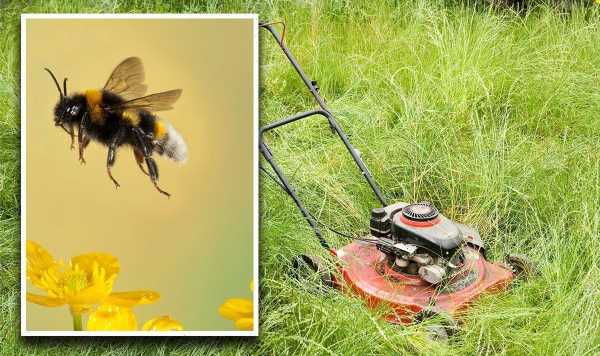How The Beeswax Wrap Co. operates a sustainable business
We use your sign-up to provide content in ways you’ve consented to and to improve our understanding of you. This may include adverts from us and 3rd parties based on our understanding. You can unsubscribe at any time. More info
Since 1900, the UK is reported to have lost 13 species of bee, and a further 35 are considered under threat of extinction. Bees play a crucial role in promoting a healthy environment, and subsequently, the economy. They are the most valuable resource for pollination and without them, the world’s food production would suffer severely.
Figures show it could cost farmers up to £1.8 billion to pollinate their crops without bees, and like with any additional production cost, this would naturally have a knock-on effect on consumers.
This steady decline would also have a significant effect on the UK’s green spaces, as their reliable pollination skills help promote the growth of plants and trees, enabling the natural world to flourish.
This is critical in the bid to help the world cope with climate change, as these natural spaces work to absorb excess water and heat, which is slowly melting the planet.
There are a number of reasons attributed to the bee decline, including but not limited to:
- changes in land use
- farming practices
- pollution
- invasive non-native plant and animal species
- habitat loss

Thankfully, research has revealed tried and tested methods to help repopulate the country with bees.
And there’s a key way you can help from the comfort of your home.
This method will even give you more free time on your hands – crazy?
No Mow May
The method is simple; don’t mow your lawn in May. Let your garden grow freely for the duration of the month to enable grass and weed growth for pollinators, like bees, to thrive.
Foraging resources are limited during this month, so, in order to provide as much food for the pollinators as you can, avoid getting the lawnmower out.

Dennis Fermenich, a consulting forester said: “That one window when the insects and pollinators are here already, but the other native plants haven’t come into the seasonal bloom or flourished.”
“It’s that critical window that we are looking at ways to bolster.”
Not only does this simple move play a role in helping to save the planet, but it means you get a break from the tiring chore of mowing the lawn. Sounds too good to be true (it is true).
How else can I help save the bees?
Alongside avoiding the lawnmower, there are several other ways you can help boost the bee population.
DON’T MISS:
Fantastic mini beasts… and where to find them [INSIGHT]
‘Inexpensive’ ways to keep ‘destructive’ bugs at bay [EXPLAINED]
Property: How to boost house value by 77% through your garden [ANALYSIS]

Plant nectar-rich flowers in your borders, pots, and window boxes
There are over 1,500 species of insect pollinators in the UK, meaning there’s fierce competition for vital nectar sources during the foraging season, particularly in the summer months.
So, ensuring that bees, moths, butterflies, and beetles all have enough good food sources is vital.
Conservation expert Jimmy Doherty said: “Peonies, lavender, asters, and dahlias are all great examples of plants that look beautiful in bloom and provide plenty of nourishing nectar for pollinators.
“If you don’t have a garden, you can plant pollinator-friendly plants in pots on a balcony, or even in hanging baskets and window boxes, too.”
Grow bee-friendly herbs
Bees love herbs, and growing these 10 common types will not only provide bees with valuable nectar and pollen throughout the year, but they’re also great to cook with.
So, save money off your shopping list and invest in seeds for the following:
- Wild marjoram plant – flowering season – summer/autumn
- Mint – flowering season – summer/early autumn
- Fennel – flowering season – mid to late summer
- Borage – flowering season – spring/summer/early autumn
- Chives – flowering season – spring/summer
- Rosemary – flowering season – spring
- Sage – flowering season – late spring/summer
- Hyssop – flowering season – summer/early autumn
- Lemon balm – flowering season – summer
- Thyme – flowering season – summer
Get a bee saver kit
Friends of the Earth offer a brilliant bee saver kit including wildflower seeds, a garden planner, a bee spotter guide, a step-by-step guide with hints and tips, as well as a nice bee postcard.
To get your hands on one of these, all you have to do is make a donation of your choice to the Friends of the Earth charitable trust.
Source: Read Full Article
